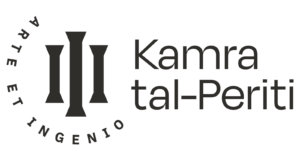CIR 06/25 | Sanitary Regulation tolerances in Minor Amendment Applications
1. Purpose
This Circular serves to notify members of an important procedural update communicated to the Council of the Kamra tal-Periti by the Executive Chairperson of the Planning Authority. This update forms part of broader discussions on regulatory efficiency and the streamlining of policies and regulations currently being held between the Kamra tal-Periti (KTP) and the Planning Authority (PA), as well as between the National Building Council (NBC) and the PA.
This Circular is to be read alongside Directive DIR 05/25 on the reporting of measurements in compliance checks.
2. Procedural Update on Tolerances in Sanitary Regulations
The Planning Authority has adopted a new internal procedure concerning the application of the Development Planning (Health and Sanitary) Regulations (S.L. 552.22).
- Under regulation 4, the Planning Authority may, at its discretion, permit dimensions that are lower than those stipulated, provided that compensatory measures are in place which achieve an equivalent sanitary outcome.
- Examples of compensatory measures include the provision of a larger external aperture in lieu of a smaller aperture originally specified.
- This internal procedure applies only in the processing of minor amendment applications – that is, applications filed by periti to amend a planning permit so as to reflect the as-built situation.
- As part of this procedure:
- Discrepancies of up to 2cm may be processed directly by planning officers.
- Discrepancies greater than 2cm will be escalated and decided upon at Director grade or higher.
3. Important Clarifications
Periti are reminded of two key points:
- This tolerance procedure applies exclusively to the sanitary regulations contained within S.L. 552.22, and only within the specific context of minor amendment applications. It does not extend to other planning regulations, policies, or application types.
- Proposed drawings submitted with planning applications must continue to conform fully with the prescribed regulations. The discretion allowed under this internal procedure relates solely to the assessment of as-built minor amendment applications and does not in any way diminish the requirement for conformity at the original application stage.
Conclusion
Members are to take careful note of this update in their professional practice. The Kamra will continue to engage with the Planning Authority and the NBC to ensure that these procedures are applied consistently, transparently, and fairly across all cases, and that further progress is made in streamlining and improving the regulatory process.
